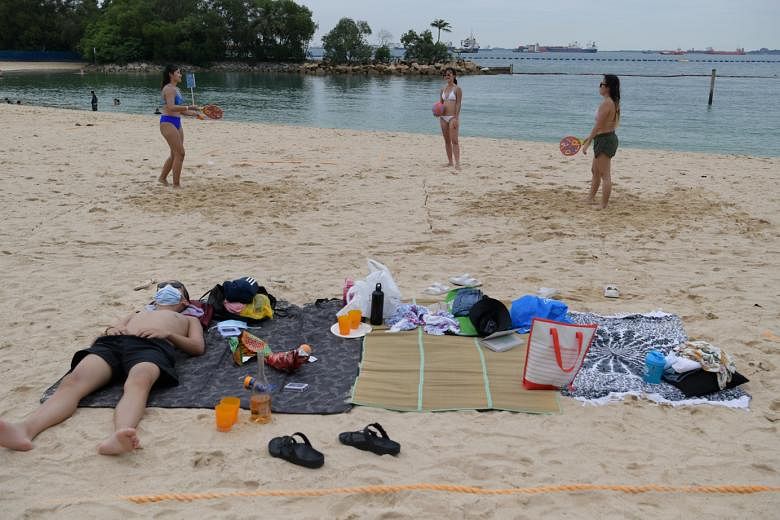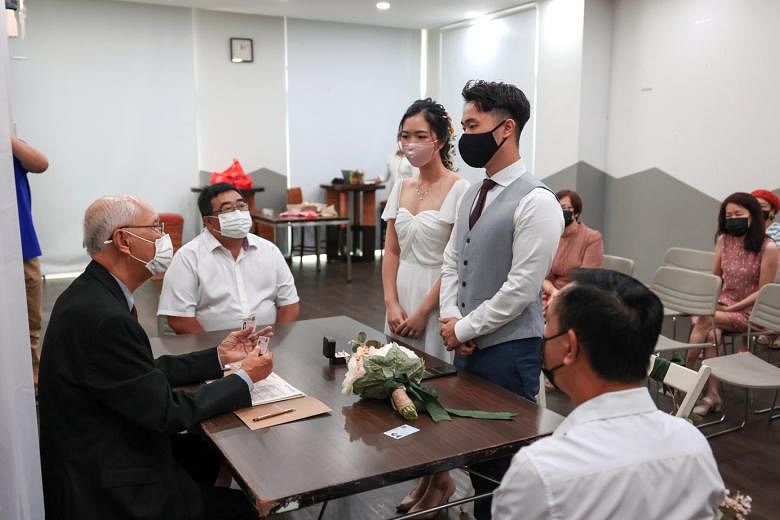With the number of Covid-19 infections under control in Singapore as cases inch towards the single digits, the focus now is on reviving the flagging economy.
This involves the process of reopening, but choosing how and when to ease restrictions is hardly a straightforward task and involves numerous trade-offs, experts said.
For instance, the decision to restart "cruises to nowhere" next month - albeit at 50 per cent capacity - has drawn mixed reactions about potentially having more than a thousand passengers on board the same vessel.
Many ask why dining in groups of larger than five is still not allowed, while the easing of border restrictions - seen by some as being riskier - continues.
Restrictions are set to be eased in the coming weeks as Singapore moves into phase three of reopening, with changes to regulations on the size of group gatherings and participation at mass events.
TRADE THE DRIVER OF GROWTH
Experts say it is important to continue the opening of international channels, as Singapore's open economy is heavily dependent on external trade in goods and services.
Economist Song Seng Wun at CIMB Private Banking said: "Trade is three times the size of our economy.
"When countries are in lockdown and flights are halted, the impact on our exports, whether it is services through Changi Airport or leisure and travel, will all be heavily affected."
The Government has thrown a lifeline, committing close to $100 billion in support measures to cushion this fallout.
This has helped prevent gross domestic product from contracting a further 5.6 per cent this year and 4.8 per cent next year.
Some 155,000 jobs would also be saved over these two years, although there will still be job losses overall. However, reliefs are only a stopgap solution.
"We are a very small country with a small population.
"Huge government spending to lift growth will not be as effective as that forms only a small part of the overall contribution to growth," Mr Song said, stressing that the bulk of growth and job creation is a result of overseas demand.
For instance, "Singapore Airlines is entirely reliant on international demand", Mr Song said.
"To fly an airplane, there are also parts that will need repair, food for passengers, food and beverage outlets at the airport terminals and so on - plenty of jobs at stake".
He noted that a well-controlled domestic situation gives Singapore leeway to loosen travel curbs.
The 1.6 million visitors who came every month on average last year was reduced to a trickle, to just 8,900 in August, a 99.5 per cent decline.
Changi Airport slipped from the seventh busiest to 58th for international passenger traffic, putting many livelihoods at stake.
In Parliament last week, Transport Minister Ong Ye Kung said the need to take proactive steps to revive the Changi air hub was a top national priority.
TOWARDS PHASE THREE
With many widely anticipating phase three to come, Singaporeans can expect loosening of curbs in certain areas.
For instance, more co-curricular activities will be allowed to resume after the year-end examinations in schools, the Ministry of Education announced last Wednesday.
Additional steps to revive air travel can also be anticipated - from negotiating travel bubbles to unilaterally lifting border restrictions on safe countries and regions, to the continued pursuit of reciprocal green lane arrangements.
Singapore has opened its borders to travellers from Brunei, New Zealand, Vietnam and Australia, excluding the state of Victoria.
However, long-term predictions on how the global economy will look and the rebound of travel will be difficult to make, said Associate Professor Nitin Pangarkar from the department of strategy and policy at the National University of Singapore Business School, adding that much would also depend on how the coronavirus evolves.
But changes may be afoot in the aviation industry, with airlines potentially looking to operate smaller, and hopefully more nimble, fleets.
Prof Pangarkar noted that business travel is likely to become leaner, as Covid-19 has proved video conferencing to be a viable option.
"This would threaten airline profitability as first-class and business-class seats are much more lucrative over budget and economy ones," he explained.
In any case, many people, including Singaporeans, are in no hurry to hop on a flight to travel and may prefer to wait a little longer, Mr Song noted.
TOUGH DECISIONS
Against the urgent need to revive the economy, the risk of a resurgence of Covid-19 cases looms large.
A calibrated and steady approach promises not to upset the balance in reopening one sector cautiously at a time, watching for flare-ups, and relaxing curbs when the situation stabilises.
Hence, priority has been given to relaxing travel restrictions over increasing dining-in numbers - a pragmatic decision to save vital industries over allowing more personal freedoms, said Dr Phua Kai Hong, an adjunct senior research fellow at the Institute of Policy Studies in the Lee Kuan Yew School of Public Policy.
Clubs, pubs and karaoke outlets have to take a backseat for another reason, as they are highly risky and are difficult to regulate and conduct contact tracing on.
Ms Selena Ling, chief economist for OCBC Bank, also noted that the domestic entertainment sector is small and unlikely to move the needle for the economy overall.
Easing travel restrictions depends not just on the Covid-19 "safety" factor - whether the other country has it under control - but also how important visitors from that country are to the Singapore market, Ms Ling said, and the economic links that would make business travel advantageous.
She added: "The situation is quite fluid.
"I would not be surprised if the door is opened or closed again, depending on the Covid-19 situation on the ground."
Associate Professor Alex Cook, vice-dean of research at the National University of Singapore's (NUS) Saw Swee Hock School of Public Health, called decision-making "a really difficult one" due to the competing demands of health, economics, social needs and the big uncertainty of not knowing the impact of each change.
Health considerations are threefold, Prof Cook added.
"The first is transmission risk, second, the risk to vulnerable groups, and the third is indirect - the impact on physical and mental health.
"All three are also very hard to measure."
"Social imperatives, like the happiness of singing in church, or children playing team sports again, these are hard to put numbers to. Juggling everything is tough."
RISK ASSESSMENT
Professor Dale Fisher, senior consultant in the infectious diseases division at the National University Hospital, lauded the cautious approach, saying steady forward progress is better for the community.
Noting that the World Health Organisation is aiming for just 20 per cent of the world to be vaccinated by December next year, he said: "We don't want to be bouncing between circuit breakers... It's draining on most societies.
"So this is a long-haul journey."
Professor Teo Yik Ying, dean of the NUS Saw Swee Hock School of Public Health, said the necessity of accepting the risk of community transmissions in order to allow more economic activity to resume is "a gamble governments must take".
He added: "Sensible governments can stack the odds in their favour by enforcing sector-specific measures to reduce transmission risks.
"The cap of five is one example, and so is the strict rule on mask-wearing.
"These allow most activities, both economic and individual, to resume while managing transmission risks."
With the end of the pandemic still not in sight, the authorities will have to keep performing this balancing act.



